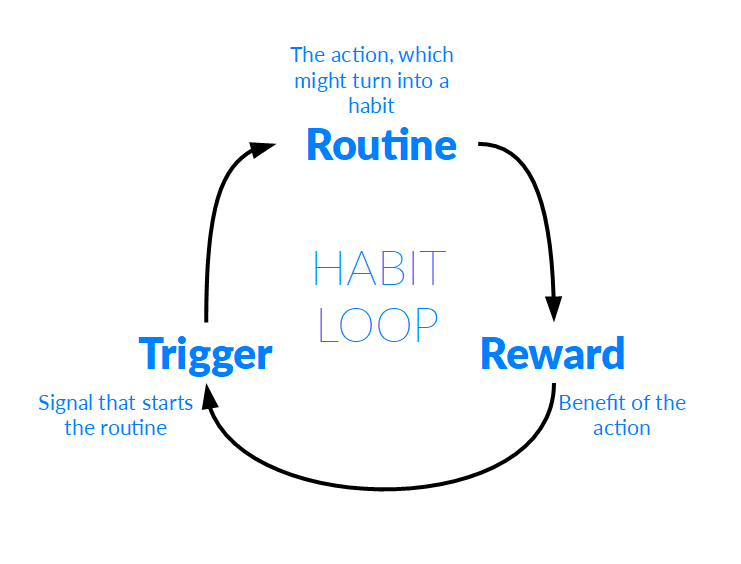Use Job Stories To Hook Users
Why User Stories Are Ill-Equipped For Building Addictive Products
“First we make our habits, then our habits make us” — John Dryden
The holy grail of a product is to get users hooked. To become so embedded in users’ lives, absence of the product causes longing and anxiety. The product has the magical ability to lure them back for more.
Few products are able to achieve this. It requires a deep understanding of your users. To know the current situation they are in and the desired situation they want to be in. To create user interactions that shape behavior.
I will show Job Stories are better for developing habit-forming products than User Stories.
How Do You Influence Behavior In Products?
When you want to influence user behavior and create habits, it all starts with a trigger. Triggers are cues that tell a user to do something. Triggers get a habit started.
A trigger can be both internal, in the mind of a person, or external, existing in the outside world. An example of an external trigger is when you get a notification on your phone it will rain soon. You open the notification to see at what time the rain will stop.
Whether a trigger elicits a response depends on two other things: motivation and ability. How motivated are you to perform the action? If you are very motivated, you will still perform an action even if it is difficult. If you are not very motivated, then the expected action should be very easy to perform. Otherwise you will give up.
This leads to the following simple behavior model as proposed by B.J. Fogg:
Behavior = Motivation x Action x Trigger
In Fogg’s Behavior Model, the line shows the divide between where triggers result in an action or not. Triggers above the line result in the desired behavior. Motivation and ability together with the strength of the trigger determine if the behavior will take place.
Triggers Power The Formation Of Habits
Triggers alone do not tell the whole story. To form habits that last, you need at least three ingredients:
Trigger.
Routine.
Reward.
Triggers are to habits like kindlings to lighting a fire. Triggers get the habit loop started and help to keep it running so new habits can form. Without triggers it is impossible to form a new habit.
The trigger signals us to start our routine. The routine is what we call the habit, even before it reaches the stage of becoming a habit. The routine should result in some kind of positive feedback that closes the loop and allows it to start again.
Run the habit loop long enough over time and the routine becomes an actual habit. Something we do automatically without having to think.
How Does The Habit Loop Relate To User Stories?
User Stories have the following format:
As a <Role>, I want <What?>, so that I <Why?>
So to make it concrete, imagine we want to implement the following User Story:
As a user, I want to view the current weather forecast, so that I can adapt to the weather.
How would this information help you to generate a strong trigger? The only thing that is clear is the action the user wants to perform. The motivation and ability, are implicit in the persona or the expected outcome. This means assumptions are necessary. These assumptions make it difficult to create a strong and meaningful trigger.
To generate a powerful trigger you need to understand the context and situation of the user. Otherwise you cannot help trigger the desired behavior at the right moment. You also need to understand their motivation and the right way to offer a reward.
Comparing With Job Stories
Job Stories start with the Jobs-to-be-done (JBTD). What is the job we would hire our weather application for?
We can formulate the general job we hire our weather application for as follows:
Free me from the hassle of worrying about how the weather affects my life, so I can spend my time more effectively.
We can then use this information to power our Job Stories.
Job Stories have the following format:
When I am in <Situation>, I want to <Motivation>, so that I can <Expected Outcome>.
Now let’s describe the previous User Story as a Job Story, while taking the Jobs-to-be-done in account.
When waking up, I want to know the current weather forecast, so I can dress appropriately before leaving the house.
We could also have written it in another way:
When heading back home from work, I want to know the current weather forecast, so I can prevent getting home all wet.
Both situations provide enough context to design a suitable and relevant trigger. The motivation is clear, the specific situation and what the person wants to achieve as well. It is not lumped together in a generic User Story statement, where the situation and the context of the user are implicit. The Job-to-be-done is clear and can be adapted to the current situation of the user.
Job Stories Aid The Creation Of Powerful Triggers
To form a habit you need three ingredients: a trigger, routine and a reward. These three ingredients form the habit loop. The loop needs to be executed again and again to turn a routine into a habit that runs automatically.
Job Stories grounded in Jobs-to-be-done help to focus on the problem your product is solving and the benefit it offers. You can leverage this understanding to make enticing triggers. By using the details of the current situation and the motivation of the user, you can craft the trigger to be more persuasive and attractive.






